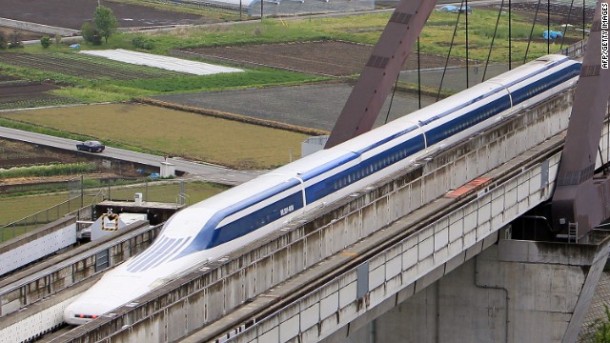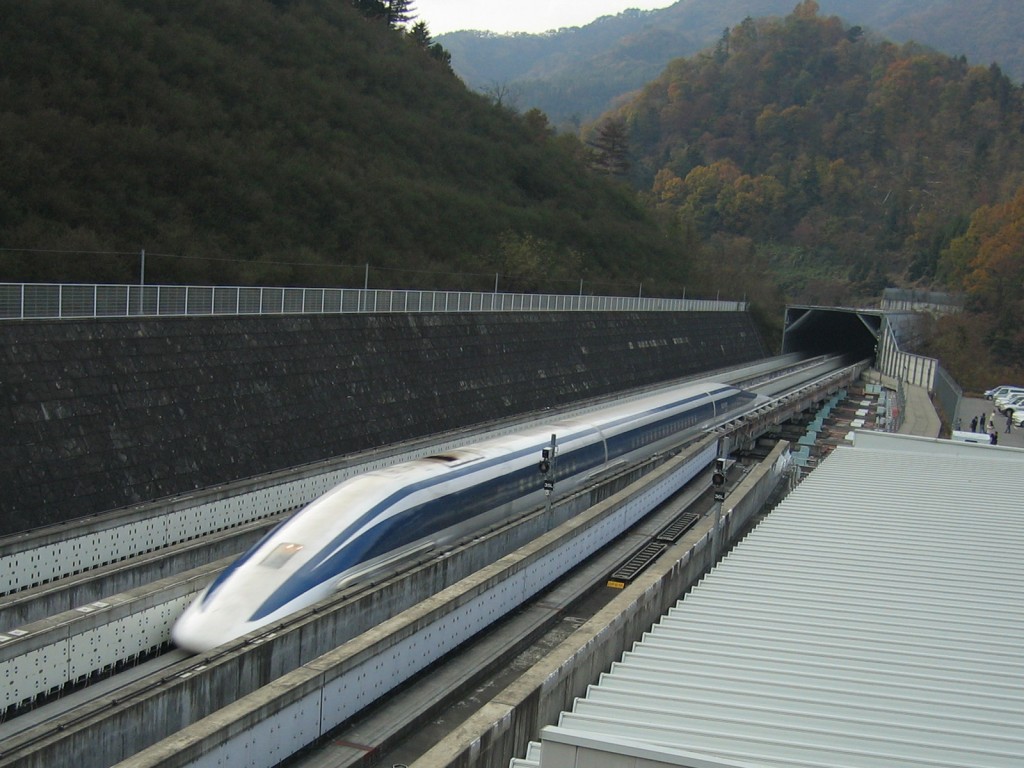The Central Japan Railway Company has come up with a new way to carry passengers at up to 500 km/h (311mph) by developing the Shinkansen Maglev Train. According to the reports by BBC, one hundred wide-eyed train enthusiasts were on-board the first manned voyage of the train in the trial that was part of the eight day trials routine.
Japan’s famed bullet trains that travel at speeds of around 320 kmh 200 (mph), will soon be left behind by the Shinkansen, which uses the force of electromagnets for propulsion and hover above the track. Shinkansen has broken all records in this matter.
For several years, the benefits of these super fast, friction free train systems have been explored. In 2012, China’s state-owned press agency reported that China South Locomotive & Rolling Stock Corporation Limited, the largest rail vehicle maker in the country, inspired by an ancient Chinese sword capable of hitting 500 km/h (311mph), built a super fast bullet train. But China’s vision for the transport as ultra-fast as these stretch back further than this. In 2003, Shanghai’s Transrapid Maglev Train hit 500 km/h during its testing.
Earlier this year, Chinese scientists theoretically built a super-maglev train that could achieve a speed as high as 1,800 mph. The theory stated that such speeds would be achieved by running the train through a vacuum by eliminating air resistance. Then there is the non-maglev Hyperloop, proposed by Elon Musk that would aim at transporting passengers from San Francisco to downtown Los Angeles in 30 minutes.
Last year, testing began on Japan’s new maglev train after a prototype was revealed in November 2012. Unmanned tests were carried out for a distance of 18 km (11 mi). The train has become the first one to carry passengers at such speeds. According to Daily Mail reports, 2400 passengers drawn from a pool of 300,000, were selected through lottery to ride the train during its test period. The system is due for completion in 2027 and is expected to take almost half time from Tokyo’s Shinagawa Station and the city of Nagoya, as compared to the average time taken right now (80 minutes) . BBC has posted a video in which the thrill experienced by the first passengers can be viewed.

